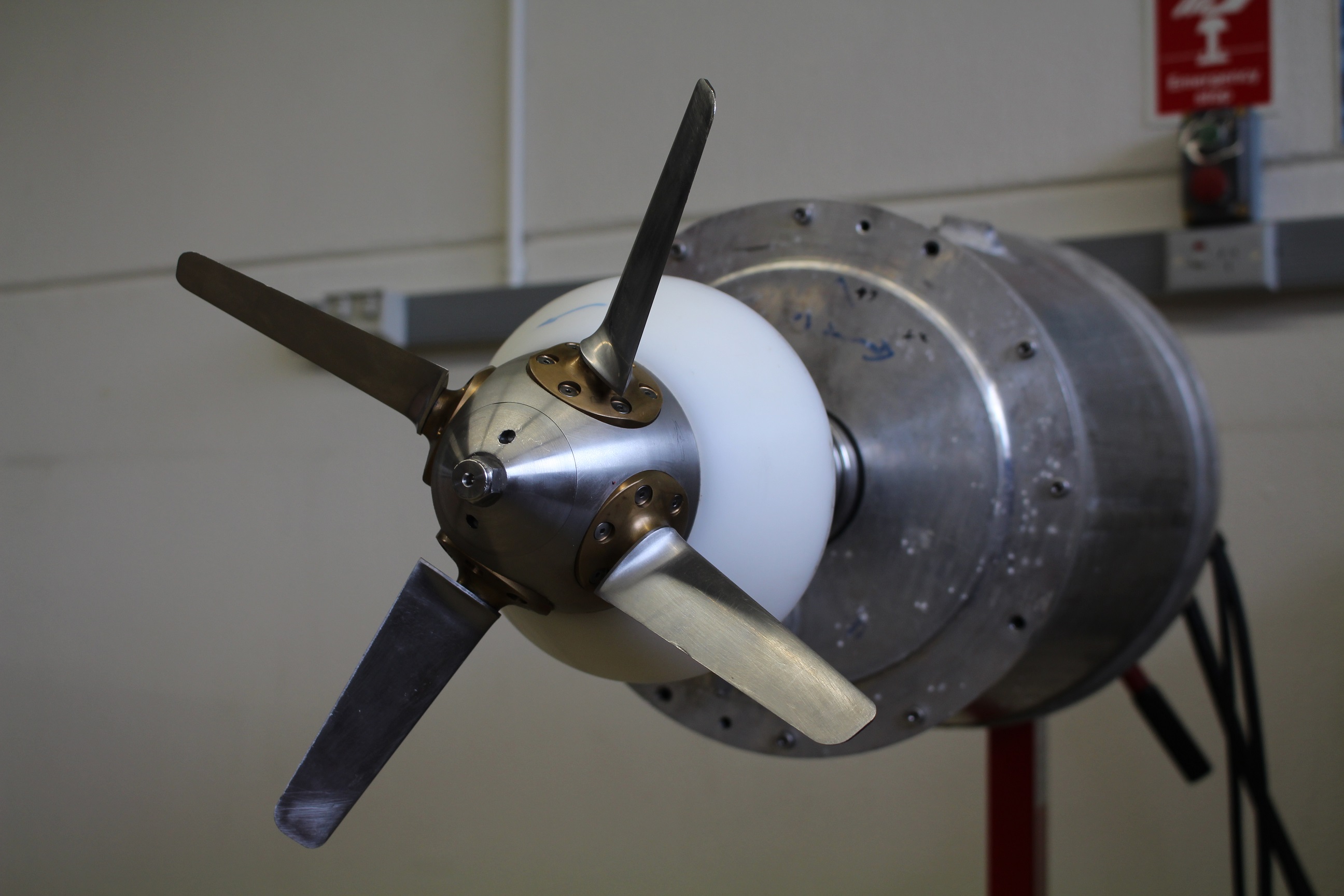
Technology used to keep helicopters aloft could one day be found helping to power and control underwater robots, according to PhD student Arno Dubois.
Arno is investigating how the technology that makes helicopters capable of flying forward, backward and side-to-side could help Autonomous Underwater Vehicles (AUVs) travel further and manoeuver more accurately and effectively.
“Today’s torpedo-style AUVs are great at travelling long distances efficiently, but they aren’t so good at manoeuvring at slow speeds,” Arno explains.
“It’s just like how it’s very difficult to steer a kayak if you’re going slowly: the flow just does not pass fast enough over the propeller blades to generate a sufficiently large manoeuvring force to be able to affect the travel direction of the AUV effectively.”
This is a problem because AUVs – remotely programmed to collect huge volumes of data from places too deep or inhospitable for humans– are often used to carry out very sensitive operations, such as inspecting oil and gas pipelines, which need manoeuvring accuracy at slow speeds.
“With today’s AUVs, there’s something of a pay off between efficiency over long distances and accuracy manoeuvring at low-speeds. Low-speed manoeuvring aids like podded thrusters are sometimes used, but these reduce the long-endurance travelling capabilities of the vehicle,” Arno said.
My research aims to demonstrate how technology from propellers currently used in helicopters could improve both long-range propulsion capabilities and accurate manoeuvring at slow speeds for AUVs.
“My research aims to demonstrate how technology from propellers currently used in helicopters could improve both long-range propulsion capabilities and accurate manoeuvring at slow speeds for AUVs.”
The helicopter’s solution is called a collective and cyclic pitch propeller, or CCPP.
The CCPP propeller can change the pitch angle of its rotor blades collectively – which controls the forward movement – or it can adjust the pitch angle of individual blades over a rotational cycle.
This creates a force imbalance that affects the orientation of the vehicle - and the direction of travel - even at very low speeds.
The cyclic pitch aspect was adopted from helicopters where, almost a hundred years ago, it was discovered to be a key aspect in allowing controllable helicopter flight.
Arno is one of the first researchers to use numerical modelling called Computational Fluid Dynamics (CFD) to simulate the use of this propeller with an AUV.
A prototype propeller is also being tested by some of his colleagues in AMC’s towing tank facility, and the results will be used to validate Arno’s numbers.
The experimental and numerical work aim to complement each other, bringing together different perspectives and data.
Arno’s goal is to analyse and improve the performance of the propeller, with a view to paving the way for the creation of a next-generation prototype.
“The modelling is helping us understand how the propeller can fulfil its potential. We’re finding out more about its control and how to ensure the forces upon it are exactly right. At the end of the research, we should have the knowledge and tools needed to create a new prototype propeller.”
At the end of the research, we should have the knowledge and tools needed to create a new prototype propeller.
Arno thinks propeller-driven AUVs have the potential to benefit the entire AUV industry. It’s an industry that’s burgeoning, driven by the rising importance of the AUVs for general research in the fields of biology and geology, maritime security, defence and offshore gas & oil drilling.
“Increased accuracy at low speeds would certainly benefit the oil and gas industry, for their sensitive, slow-speed pipeline inspection work.
“The propeller also has the potential to be more efficient than those currently available, expanding the battery life, which would mean that AUVs can travel further and longer.
The propeller also has the potential to be more efficient than those currently available, expanding the battery life, which would mean that AUVs can travel further and longer.
“This reduces the need for transportation by ship and means less human interaction, cutting the overall operational costs. This could benefit science, defence, rescue operations and more.”
Belgian Arno began his research at AMC a year-and-a-half ago, following a three-month internship at the College in 2013 as part of his master’s studies at Delft University of Technology, the Netherlands.
“I liked the work environment and the people, and so I applied to come back here once I’d finished my master’s degree at home,” Arno said.
“AMC is great for the kind of research I wanted to carry out: it has Computational Fluid Dynamics specialists as well as the experimental facilities that are important for validating the results of my numerical modelling.”
When asked about what motivates him, it’s clear that Arno is an ardent CFD enthusiast – and feels strongly about passing on his knowledge.
“I really like maths and immersing myself in finding solutions to hard problems. I think it’s really important to help undergraduates understand how numerical solutions can solve problems. For this reason, I’m also a tutor on the undergraduate CFD course.
“These days, we don’t need supercomputers to do CFD simulations. Undergraduates can do simulations on their own laptops. This is pretty amazing and I want to help get the word out about the power of CFD modelling, while reminding students of the dangers of blindly trusting numerical results.”
From May, Arno is undertaking a five-week internship at the CFD software company NUMECA International in Belgium, where he is investigating and assessing the potential of the numerical methodology he’s developed.
But ultimately he wants to use his industry experience to help more students fulfil their potential.
“My end goal is to work in academia. But I can contribute way more if I can tell them what it’s like in the real work, and so I want to get industry experience first.”
Published on: 08 Jun 2017

